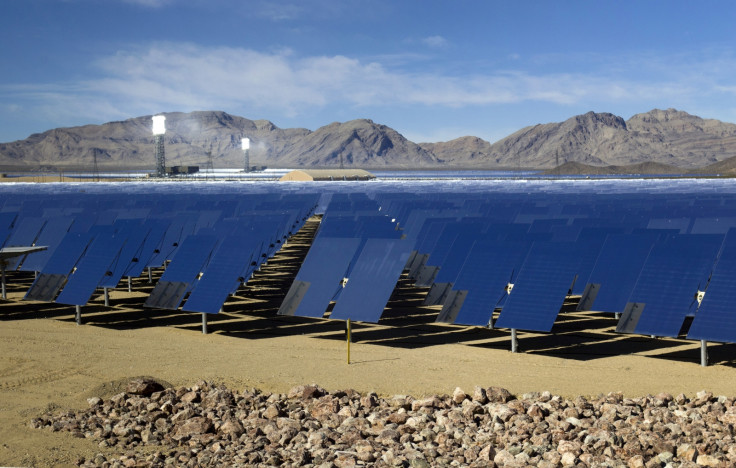Climate Change: Renewable Energy Can Meet Global Demand and Cut Carbon Emissions, Roadmap Shows
International Renewable Energy Agency publishes plan to meet world's energy and environmental demands

The global roadmap developed by the International Renewable Energy Agency (IRENA) shows that not only can renewable energy meet the rising demand but do so cheaply, helping limit global warming to two degrees during the century.
Under the business as usual scenario, average carbon dioxide (CO2) emissions will be 498 g/kWh by 2030. That is insufficient to keep atmospheric CO2 levels below 450 parts per million (ppm), beyond which severe climate change is expected to occur.
But, a doubling in the share of renewables could reduce the global average emissions of CO2 to 349 g/kWh. Coupled with greater energy efficiency, it can keep atmospheric CO2 below 450 ppm.
As nations gather this week for a climate summit in New York, the IRENA road map ought to provide some clarity.
The REmap 2030 plan notes that renewable power capacity has grown by 85% in the last decade, but appeals to nations and governments to go beyond short-term growth goals and provide sustainable prosperity for everyone.
World electricity generation is forecast to grow by 67% from 22,126 terawatt-hour (TWh) in 2011 to 37,000 in 2030. A major part of this additional capacity is expected to be based on fossil fuels.
Added to this is growing pressure to bring electricity to the 1.3 billion people who currently have no access to it.
Carbon reduction goals
Electricity production accounts for more than 40% of man-made CO<sup>2 emissions.
Solar, wind, nuclear, hydroelectric, geothermal and bioenergy are, across their lifetimes, 10 to
120 times less carbon intensive than the cleanest fossil fuel – natural gas – and up to 250 times lower in carbon than coal.
The roadmap appeals to nations to take advantage of price drops in renewable sources of power, noting that solar photovoltaic (PV) prices have fallen by 80 per cent since 2008, and are expected to keep dropping.
Increasingly, solar PV can compete without subsidies. Solar farms are selling power to spot markets in many places.
In 2013, commercial solar power cost the same to produce as other sources of electricity in Italy, Germany and Spain, and is expected to do so soon in Mexico and France.
The cost of onshore wind power has also fallen 18 per cent since 2009, with turbine costs falling nearly 30 per cent since 2008, making it the cheapest source of new electricity in a growing range of markets. More than 100 countries now use wind power.
Spain's use of renewables avoided importing $2.8bn (£1.7bn, €2.1bn) of fossil fuels in 2010, while Germany saved $13.5bn in 2012. A Japanese study, looking at a 2030 target of 14 to 16 per cent of renewables, found the benefits were two to three times higher than the costs.
Worldwide, renewable power capacity has grown 85 per cent over the past 10 years, reaching 1,700 GW in 2013, and renewables today constitute 30 per cent of all installed power capacity.
© Copyright IBTimes 2025. All rights reserved.





















